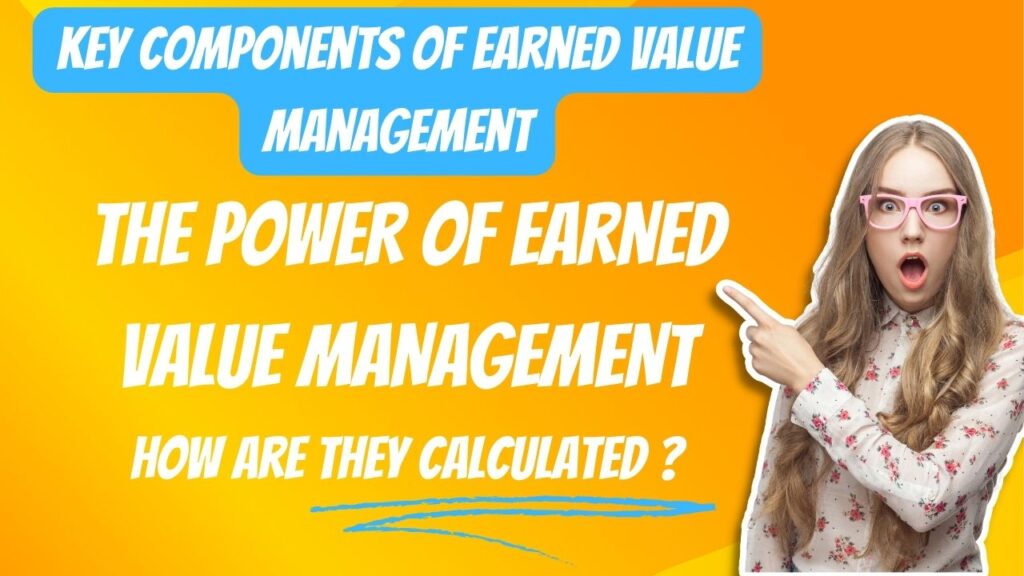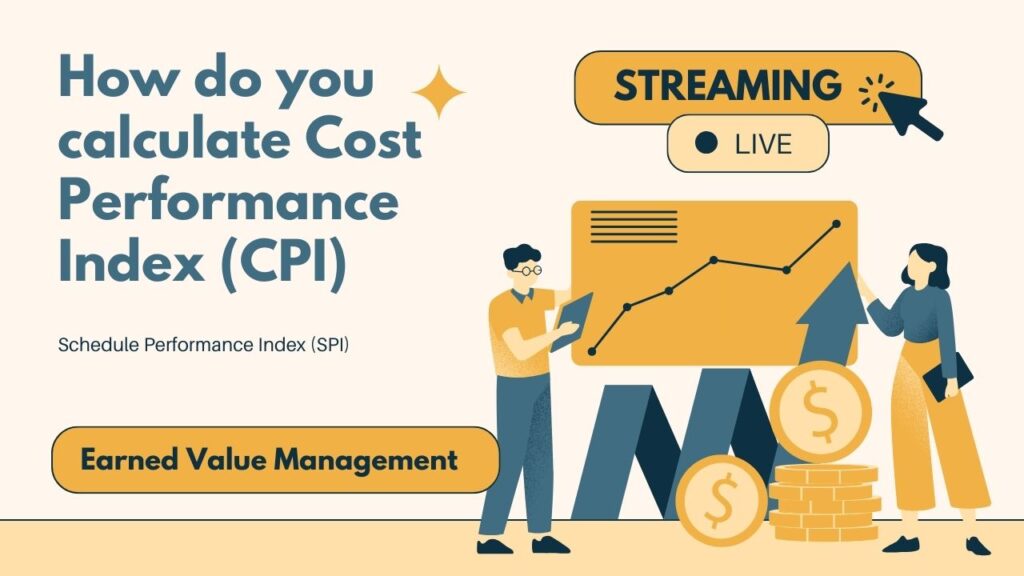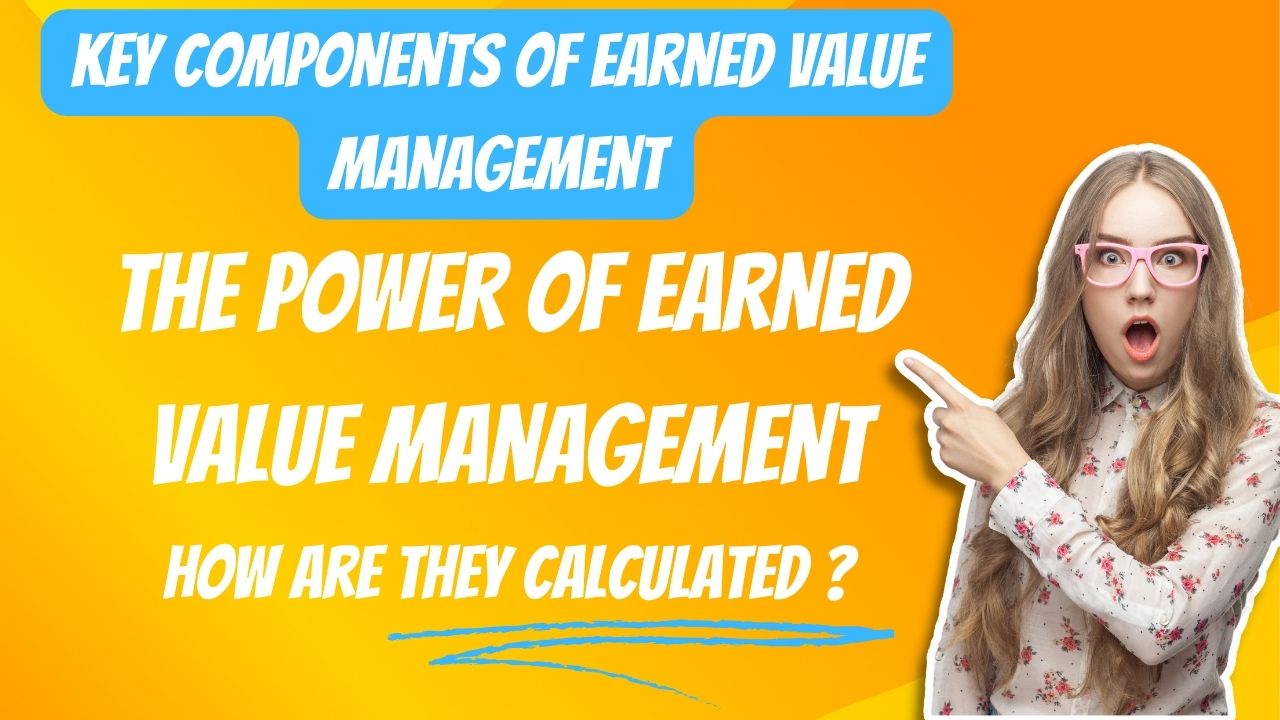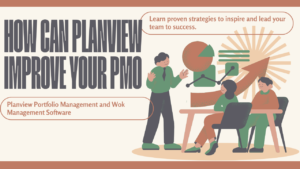Earned Value Management (EVM) in Project Management
Table of Contents
I. Introduction:
In the realm of project management, staying on track and ensuring success is paramount. One method that has gained significant traction in recent years is Earned Value Management (EVM). In this blog post, we’ll unravel the essence of Earned Value Management, exploring its definition and why it holds a crucial position in project management strategies.

A. Definition of Earned Value Management (EVM):
Earned Value Management (EVM) is a project management technique used to assess project performance and progress in a systematic and objective manner. It integrates cost, schedule, and scope metrics to provide insights into a project’s health and predict its future outcomes. Essentially, EVM allows project managers to measure the value of work performed against the planned cost and schedule, providing a comprehensive view of project efficiency and effectiveness.
B. Importance of Earned Value Management in Project Management:
The significance of EVM in project management cannot be overstated. Here’s why:
- Performance Measurement: EVM offers a structured approach to measure project performance, enabling project managers to assess whether a project is on track, ahead, or behind schedule and budget.
- Early Warning System: By comparing planned values with earned values, EVM serves as an early warning system, alerting project managers to potential issues or deviations from the baseline plan. This allows for timely corrective actions to be taken to mitigate risks and ensure project success.
- Objective Decision-Making: EVM provides objective data and metrics that facilitate informed decision-making. Instead of relying on subjective assessments, project managers can rely on quantitative data to prioritize tasks, allocate resources, and adjust project plans as needed.
- Stakeholder Communication: EVM enhances communication and transparency among project stakeholders by providing a clear and standardized method for reporting project progress. Stakeholders can easily understand project performance metrics and make informed decisions based on reliable data.
- Continuous Improvement: By analyzing EVM data and identifying areas for improvement, project managers can implement corrective actions and process enhancements to optimize project performance and increase efficiency in future projects.
In essence, Earned Value Management is not just a tool but a cornerstone of effective project management. Its ability to provide objective insights, facilitate early detection of issues, and drive continuous improvement makes it indispensable for project managers striving for success in today’s dynamic business environment.
Stay tuned as we delve deeper into the intricacies of Earned Value Management, exploring its key components, application techniques, and best practices in upcoming posts. Join us on this journey to unlock the full potential of your projects with Earned Value Management.
II. Fundamentals of Earned Value Management
Introduction:
In the dynamic landscape of project management, staying abreast of effective methodologies is crucial for success. One such methodology that has gained significant traction is Earned Value Management (EVM). Let’s delve into the core fundamentals of EVM, unraveling its key components and essential formulas.
A. Explanation of Key Components:
- Planned Value (PV): Planned Value, also known as the Budgeted Cost of Work Scheduled (BCWS), embodies the sanctioned budget allocated for scheduled tasks. In simpler terms, it denotes the estimated value of the work scheduled to be completed by a specific point in time during the project.
- Earned Value (EV): Earned Value, also known as Budgeted Cost of Work Performed (BCWP), signifies the value of the work that has been completed at a given point in time. It quantifies the budgeted cost of the work actually accomplished, providing insight into the progress made against the planned schedule and budget.
- Actual Cost (AC): Actual Cost, or the Actual Cost of Work Performed (ACWP), denotes the total cost incurred to complete the work performed up to a certain point in time. It reflects the actual expenses accrued during the execution of the project tasks.
B. Overview of Earned Value Management Formulas:
Cost Performance Index (CPI): The Cost Performance Index (CPI) is a critical metric used to assess the cost efficiency of a project. Its calculation involves the division of Earned Value (EV) by Actual Cost (AC). A CPI value greater than 1 indicates that the project is under budget, while a value less than 1 signifies that the project is over budget.Example: Suppose a project has an EV of $10,000 and an AC of $12,000.
Cost Performance Index (CPI), one would follow these steps:
CPI = EV / AC = $10,000 / $12,000 = 0.83 This indicates that the project is over budget, as the CPI is less than 1.
Schedule Performance Index (SPI):
The Schedule Performance Index (SPI) measures the efficiency of a project’s schedule performance. It is computed by dividing the Earned Value (EV) by the Planned Value (PV). A SPI value greater than 1 signifies that the project is ahead of schedule, while a value less than 1 indicates that the project is behind schedule. Example: Let’s say a project has an EV of $10,000 and a PV of $12,000. The SPI would be calculated as follows: SPI = EV / PV = $10,000 / $12,000 = 0.83 This suggests that the project is behind schedule, as the SPI is less than 1.
In essence, understanding the key components and formulas of Earned Value Management is paramount for effective project monitoring and control. By leveraging these fundamental concepts, project managers can gain valuable insights into project performance and take proactive measures to ensure project success. Stay tuned as we explore advanced techniques and best practices in leveraging EVM for optimal project outcomes.
C. How Earned Value Management Works
Earned Value Management (EVM) is a powerful project management technique that provides a structured approach to measuring project performance and progress. At its core, EVM integrates cost, schedule, and scope metrics to provide a comprehensive view of a project’s health and performance. Here’s how it works:
- Setting Baselines: The first step in implementing EVM is to establish baselines for cost, schedule, and scope. This involves creating a detailed project plan that outlines the planned budget, schedule, and deliverables.
- Defining Work Packages: Work packages are identified and defined, breaking down the project scope into manageable tasks or activities. Each work package is assigned a budgeted cost and scheduled duration.
- Tracking Progress: As the project progresses, actual costs are recorded, and work completed is measured against the planned schedule and budget. This is typically done using timesheets, expense reports, and progress reports.
- Calculating Earned Value (EV): Earned Value represents the value of the work completed at any given point in time. It is calculated based on the budgeted cost of the work that has been completed according to the project schedule.Example: If a project is 50% complete and was budgeted at $100,000, the Earned Value would be $50,000.
- Determining Actual Cost (AC): Actual Cost represents the total cost incurred to date for the work completed. This includes all expenses associated with labor, materials, equipment, and overhead.
- Comparing Earned Value to Actual Cost: By comparing Earned Value to Actual Cost, project managers can assess whether the project is on track in terms of cost performance. This is done using metrics such as the Cost Performance Index (CPI), which is calculated by dividing EV by AC.Example: If the Earned Value is $50,000 and the Actual Cost is $60,000, the CPI would be 0.83, indicating that the project is over budget.
- Assessing Schedule Performance: In addition to cost performance, EVM allows project managers to evaluate schedule performance using metrics such as the Schedule Performance Index (SPI). SPI is calculated by dividing EV by Planned Value (PV).Example: If the Earned Value is $50,000 and the Planned Value is $60,000, the SPI would be 0.83, indicating that the project is behind schedule.
- Analyzing Variances: Variances between planned and actual performance are analyzed to identify areas of concern and opportunities for improvement. Positive variances indicate that the project is performing better than planned, while negative variances signal potential problems that need to be addressed.
By leveraging Earned Value Management, project managers can gain valuable insights into project performance, identify risks and issues early, and make informed decisions to ensure project success. EVM provides a standardized and objective method for monitoring and controlling projects, helping organizations deliver projects on time, within budget, and to the desired quality standards.
III. Unveiling the Benefits of Earned Value Management
In the fast-paced world of project management, where every decision counts and resources are finite, having a clear understanding of project performance is crucial. This is where Earned Value Management (EVM) steps in, offering a structured approach to measuring progress and forecasting outcomes. Let’s explore the myriad benefits that EVM brings to the table, empowering project managers and stakeholders alike.

A. Enhanced Project Visibility and Control:
One of the primary benefits of EVM is its ability to provide project managers with enhanced visibility into project performance. By integrating cost, schedule, and scope metrics, EVM offers a comprehensive view of project progress, allowing managers to identify areas of concern and take corrective actions proactively. With EVM, project managers can track actual performance against planned values, ensuring that projects stay on track and within budget.
Example: Imagine a construction project where the project manager utilizes EVM to track progress. By comparing the planned cost and schedule with the actual cost and progress achieved, the project manager identifies that the project is behind schedule due to unforeseen delays in material deliveries. With this insight, the project manager can take immediate action to expedite deliveries and mitigate further delays, thus maintaining control over the project timeline.
B. Early Identification of Project Performance Trends:
Another key advantage of EVM is its ability to facilitate the early identification of project performance trends. By analyzing variances between planned and earned values, project managers can detect potential issues or deviations from the baseline plan before they escalate into major problems. This early warning system enables project managers to address issues promptly, minimizing their impact on project outcomes.
Example: In a software development project, the project manager notices a significant negative variance in the cost performance index (CPI), indicating that the project is over budget. Upon further investigation, the project manager discovers that the team has been spending more time than planned on certain development tasks. Armed with this insight, the project manager implements measures to optimize resource allocation and streamline development processes, ensuring that the project remains on budget.
C. Improved Decision-Making Based on Objective Metrics:
EVM empowers project managers to make informed decisions based on objective metrics rather than subjective assessments. By providing quantifiable data on project performance, EVM enables project managers to prioritize tasks, allocate resources effectively, and adjust project plans as needed. This data-driven approach to decision-making minimizes the risk of costly errors and ensures that projects are aligned with organizational goals.
Example: In a marketing campaign, the project manager uses EVM to track the campaign’s progress and performance. By analyzing key metrics such as earned value and schedule performance index, the project manager identifies that certain marketing channels are delivering higher returns on investment than others. Armed with this information, the project manager reallocates resources to focus on the most effective channels, maximizing the campaign’s impact and ROI.
D. Alignment of Project Performance with Organizational Goals:
Lastly, EVM facilitates the alignment of project performance with organizational goals. By tracking project metrics against predefined objectives and benchmarks, EVM ensures that projects remain aligned with strategic priorities and deliver tangible value to the organization. This alignment fosters accountability, transparency, and stakeholder confidence in the project’s ability to achieve its intended outcomes.
Example: In a product development project, the project manager utilizes EVM to monitor progress and performance. By regularly reviewing key metrics such as planned value and earned value, the project manager ensures that the project is progressing in line with strategic objectives, such as time-to-market and product quality. This alignment with organizational goals enhances the project’s overall impact and contributes to the organization’s long-term success.
In conclusion, Earned Value Management offers a multitude of benefits that empower project managers to optimize performance, mitigate risks, and drive successful project outcomes. By enhancing visibility, enabling early identification of trends, facilitating data-driven decision-making, and aligning project performance with organizational goals, EVM serves as a cornerstone of effective project management practices. Embracing EVM allows organizations to unlock the full potential of their projects and achieve sustainable success in today’s dynamic business environment.
IV. Applying Earned Value Management in Projects
In the dynamic world of project management, staying ahead of the curve is not just an aspiration but a necessity. Earned Value Management (EVM) emerges as a beacon of guidance, offering invaluable insights into project progress, risks, and outcomes. Let’s delve into how EVM is applied in real-world scenarios, from monitoring progress to communicating with stakeholders, all geared towards achieving project success.
A. Monitoring Project Progress and Performance:
Imagine you’re overseeing the development of a software application. With EVM, you can track the progress of each milestone or deliverable by comparing the planned value (PV) with the earned value (EV). For instance, if your project is scheduled to complete 50% of its tasks by the end of the month but only achieves 40%, EVM highlights this deviation, prompting proactive measures to realign the project trajectory.
B. Forecasting Project Outcomes and Identifying Risks:
Consider a construction project where unforeseen delays can wreak havoc on timelines and budgets. EVM provides a crystal-clear view of project performance, allowing you to forecast outcomes and identify potential risks. By analyzing metrics such as the cost performance index (CPI) and schedule performance index (SPI), project managers can anticipate challenges, allocate resources judiciously, and implement preemptive strategies to mitigate risks before they escalate.
C. Evaluating Project Variance and Deviations from the Baseline:
Let’s envision a scenario where a marketing campaign is underway, but costs are escalating beyond the budget. EVM enables a thorough evaluation of project variance, comparing actual costs (AC) with planned costs (PV) to determine if the project is over or under budget. Any deviations from the baseline are promptly identified, allowing for immediate corrective actions to be taken to bring the project back on track.
D. Communicating Project Status to Stakeholders:
In a multinational corporation, transparency and effective communication are paramount. EVM serves as a universal language, enabling project managers to communicate project status, progress, and forecasts to stakeholders with clarity and precision. Visual representations such as EVM charts and reports provide stakeholders with actionable insights, fostering trust and alignment towards shared project goals.
Example: Let’s say you’re managing the launch of a new product line. By leveraging EVM, you discover that the project’s CPI is below 1.0, indicating that the project is over budget. Upon further analysis, you identify that certain tasks are taking longer than planned, leading to increased costs. Armed with this insight, you take swift action, reallocating resources and streamlining processes to bring the project back within budget, thus ensuring its success.
In conclusion, Earned Value Management is not just a tool but a compass that guides project managers through the turbulent seas of project execution. By applying EVM principles diligently, projects can navigate challenges, seize opportunities, and ultimately achieve their objectives, delivering value to stakeholders and organizations alike.
V. Integrating Earned Value Management with Project Management Processes
In the dynamic world of project management, the integration of various methodologies and techniques is essential for success. Earned Value Management (EVM) stands out as a powerful tool, but its true potential is realized when seamlessly integrated with other project management processes. In this blog post, we’ll explore how EVM can be harmoniously incorporated into project planning, execution, and monitoring phases, enhancing project outcomes and driving success.
A. Relationship between EVM and Other Project Management Processes:
EVM does not exist in isolation but intersects with various other project management processes, such as risk management and change control. For example, when assessing project risks, EVM data can provide valuable insights into cost and schedule variances, allowing project managers to identify potential risks early and allocate resources accordingly. Similarly, in change control processes, EVM can help assess the impact of changes on project performance metrics, enabling informed decision-making and minimizing disruptions.
B. Incorporating EVM into Project Planning, Execution, and Monitoring:
Integrating EVM into every phase of the project lifecycle is crucial for maximizing its effectiveness. During project planning, EVM techniques can be used to establish baseline performance metrics, including planned costs, schedules, and performance measures. Throughout the execution phase, EVM provides real-time visibility into project progress, allowing project managers to track actual costs and earned value against the baseline plan. In the monitoring phase, EVM data serves as a powerful tool for assessing project performance, identifying trends, and making informed decisions to keep the project on track.
C. Utilizing Earned Value Management Data for Project Reporting and Analysis:
EVM data is a goldmine of information that can be leveraged for project reporting and analysis. By analyzing EVM metrics such as Cost Performance Index (CPI) and Schedule Performance Index (SPI), project managers can identify areas of concern, forecast future performance, and communicate project status to stakeholders effectively. Additionally, EVM data can be used to generate insightful reports and dashboards that provide a comprehensive overview of project health and progress, enabling stakeholders to make informed decisions and take appropriate actions.
Example: Imagine a construction project where EVM is integrated into project management processes. During the planning phase, the project team establishes baseline cost and schedule estimates, along with performance measurement criteria. As the project progresses, EVM data is collected and analyzed regularly to track actual costs and earned value. In the monitoring phase, project managers notice a deviation in the Cost Performance Index (CPI), indicating cost overruns in certain project activities. By drilling down into the EVM data, they identify the root causes of the cost overruns and take corrective actions to reallocate resources and mitigate risks, ensuring the project stays within budget and on schedule.
In conclusion, integrating Earned Value Management with project management processes enhances project visibility, improves decision-making, and ultimately leads to better project outcomes. By leveraging EVM data effectively throughout the project lifecycle, organizations can drive success and deliver projects on time and within budget.
VI. Through Challenges: Challenges and Limitations of Earned Value Management
In the dynamic world of project management, where precision and foresight are paramount, Earned Value Management (EVM) emerges as a guiding beacon. However, like any robust methodology, EVM comes with its own set of challenges and limitations. In this blog post, we’ll explore these obstacles and unveil strategies to overcome them, ensuring the effective implementation and utilization of Earned Value Management.
A. Common challenges in implementing EVM:
- Resistance to Change: Introducing EVM into an organization may face resistance from stakeholders accustomed to traditional project management approaches. Convincing team members of the benefits of EVM and overcoming resistance to change is crucial for successful implementation.
- Complexity: EVM involves intricate calculations and concepts, which can be daunting for project teams, especially those new to the methodology. Simplifying these complexities and providing adequate training and support is essential.
- Data Quality: The accuracy and reliability of data used in EVM calculations are paramount. Inaccurate or incomplete data can lead to misleading results and undermine the effectiveness of EVM. Ensuring data quality through proper collection, validation, and verification processes is vital.
- Scope Management: Changes in project scope can pose challenges to EVM implementation, as they may impact planned values and baseline metrics. Effective scope management and change control processes are necessary to mitigate these challenges and maintain the integrity of EVM measurements.
B. Addressing limitations such as data accuracy and interpretation:
- Invest in Training and Education: Provide comprehensive training and education to project teams and stakeholders on EVM concepts, methodologies, and calculations. This will enhance understanding and ensure accurate interpretation of EVM data.
- Implement Data Validation Processes: Establish robust data validation processes to verify the accuracy and reliability of data used in EVM calculations. Conduct regular audits and reviews to identify and rectify any discrepancies or inconsistencies.
- Utilize Technology Solutions: Leverage advanced project management software and tools that automate EVM calculations and provide real-time insights into project performance. These tools can help streamline data collection, analysis, and interpretation, reducing the risk of errors and inaccuracies.
- Engage Subject Matter Experts: Seek input and guidance from EVM subject matter experts to address complex data interpretation issues and ensure accurate analysis and decision-making.
C. Strategies for overcoming challenges and maximizing the benefits of EVM:
- Promote Stakeholder Buy-In: Engage stakeholders early in the EVM implementation process, highlighting the benefits and value proposition of EVM for project management. Address concerns and misconceptions proactively to foster support and buy-in.
- Continuous Improvement: Establish a culture of continuous improvement, where lessons learned from EVM implementation are documented, analyzed, and used to refine processes and practices. Encourage feedback and collaboration among project teams to identify areas for improvement and optimization.
- Tailor EVM to Project Needs: Adapt EVM methodologies and techniques to suit the specific requirements and characteristics of each project. Avoid a one-size-fits-all approach and customize EVM implementation to align with project goals, objectives, and constraints.
- Monitor and Evaluate Performance: Regularly monitor and evaluate the performance of EVM processes and practices to ensure alignment with project objectives and desired outcomes. Identify KPIs and performance metrics to track EVM effectiveness and identify areas for enhancement.
Example: Imagine a software development project facing challenges with accurately tracking project costs and schedule performance. By implementing Earned Value Management (EVM), the project team gains visibility into project progress and identifies areas for improvement. However, they encounter challenges with data accuracy due to inconsistent reporting practices among team members. To address this limitation, the project manager implements standardized data collection processes and provides training to team members on EVM concepts and calculations. With enhanced data quality and improved understanding of EVM methodologies, the project team successfully overcomes these challenges and maximizes the benefits of EVM, leading to improved project performance and outcomes.
In conclusion, while Earned Value Management presents challenges and limitations, proactive strategies and best practices can help overcome these hurdles and unlock the full potential of EVM for project management success. By addressing common challenges, ensuring data accuracy and interpretation, and implementing effective strategies, organizations can harness the power of EVM to drive project performance and achieve their goals.
VII. Maximizing Project Success: Implementing Best Practices in Earned Value Management
As project managers navigate the complex landscape of project management, they often seek reliable methodologies to ensure the success of their endeavors. Earned Value Management (EVM) stands as a tried and tested approach, providing valuable insights into project performance. To harness the full potential of EVM, it’s crucial to adopt best practices that drive efficiency and effectiveness.
A. Establishing Clear Project Objectives and Performance Metrics:
Before diving into project execution, it’s essential to establish clear and achievable objectives. These objectives serve as the foundation for the project and provide a roadmap for success. Additionally, defining specific performance metrics aligned with these objectives allows for effective measurement of progress and success. For example, if the objective is to complete a software development project within a specified timeline, metrics such as planned vs. actual development hours and milestone completion dates can be tracked to gauge performance.
B. Training Project Teams on EVM Concepts and Techniques:
Effective implementation of EVM requires a deep understanding of its concepts and techniques. Investing in comprehensive training programs for project teams ensures that they are equipped with the knowledge and skills needed to utilize EVM effectively. Training sessions can cover topics such as EVM fundamentals, interpretation of EVM data, and best practices for EVM implementation. By empowering project teams with the necessary knowledge, organizations can enhance their ability to leverage EVM for project success.
C. Regularly Reviewing and Updating the EVM Baseline:
The EVM baseline serves as a benchmark against which project performance is measured. However, project dynamics and requirements may evolve over time, necessitating updates to the baseline. Regular reviews of the EVM baseline allow project managers to assess its alignment with current project objectives and make necessary adjustments. For example, if there are changes in project scope or schedule, the EVM baseline may need to be revised to reflect these changes accurately.
D. Ensuring Consistency and Accuracy in Data Collection and Reporting:
The accuracy of EVM data relies heavily on the consistency and accuracy of data collection and reporting processes. Establishing standardized procedures for data collection and reporting ensures uniformity and reliability of EVM data across projects. This includes defining clear roles and responsibilities for data collection, implementing robust data validation processes, and utilizing integrated project management tools for seamless data capture and reporting. By prioritizing consistency and accuracy, organizations can trust the integrity of their EVM data and make informed decisions based on reliable information.
Example: Consider a construction project tasked with building a new office complex within a specified budget and timeline. To effectively utilize EVM, the project team establishes clear objectives, including completing construction phases within predefined cost and schedule targets. Performance metrics such as cost variance (CV) and schedule variance (SV) are tracked regularly to assess progress. Through comprehensive training sessions, project team members gain proficiency in interpreting EVM data and identifying areas for improvement. Regular reviews of the EVM baseline allow for adjustments to be made as project requirements evolve. Consistent data collection and reporting processes ensure that EVM data accurately reflects project performance, enabling proactive decision-making to keep the project on track.
In conclusion, adopting best practices in Earned Value Management is essential for maximizing project success. By establishing clear objectives, providing adequate training, regularly reviewing the EVM baseline, and ensuring consistency in data collection and reporting, organizations can leverage EVM as a powerful tool for achieving project goals and delivering value to stakeholders



